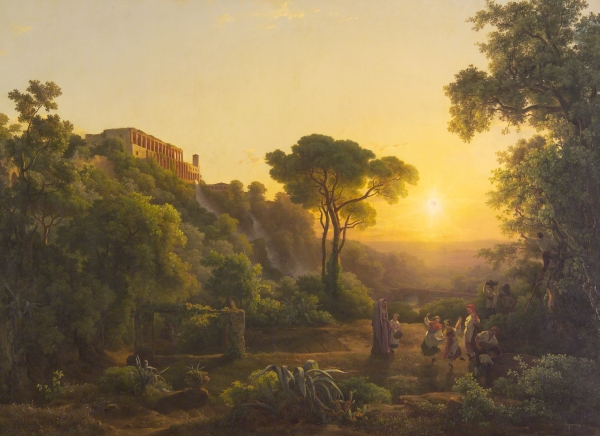Károly Markó and His Circle: From Myth to Image
Hungarian National Gallery, 6 May, 2011 – 2 October, 2011

Tájkép Tivoli mellett, szüretelő jelenettel, 1846
Károly Markó, the Elder (1793-1860), is one of the most well-known fi gures of nineteenth century Hungarian painting. He began his career when it was almost impossible to make a living as an artist in Hungary. Although he managed to attract the attention of Pest’s most signifi cant patrons in the early 1820s, he continued his artistic activities abroad. He studied at the Academy of Arts in Vienna between 1822 and 1824, but left for Italy in 1834 after a few laborious years and remained there till the end of his life. Italy was taken for an earthly paradise by contemporary artists in the fi rst half of the nineteenth century. Almost everybody went to Florence and Rome as well as visiting the whole peninsula along the classic routes, thereby making the unique art of this era evolve from the experiences of the remains of antique and renaissance art, including the captivating sunny landscape. Among the different genres it was landscape painting that became primarily dominant in this specialartistic sphere. The stories of heathen and Christian mythology depicted in partly idealized, therefore imaginary landscapes based on the seventeenth century heritage of Claude Lorrain, created a unique style whose most prominent representative was Károly Markó, the Elder. These landscapes, including the scenes they contain, almost came to life through his pantheistic approach, thereby setting a pattern to be followed by several of his contemporaries. He became a master and role model not only for his children who also became painters, or for other Hungarian artists working in Italy, but for many Austrian and Italian artists of his era, too. Our exhibition is showing the art of Károly Markó, the Elder, from the early years of his career trying to establish his own style through the different stages of the rise of his art in Italy as well as exposing his contemporaries and his pupils, and by doing so, one of the most characteristic tendencies of contemporary European painting. Markó’s drawings will be on view at the exhibition of the Christian Museum in Esztergom.



